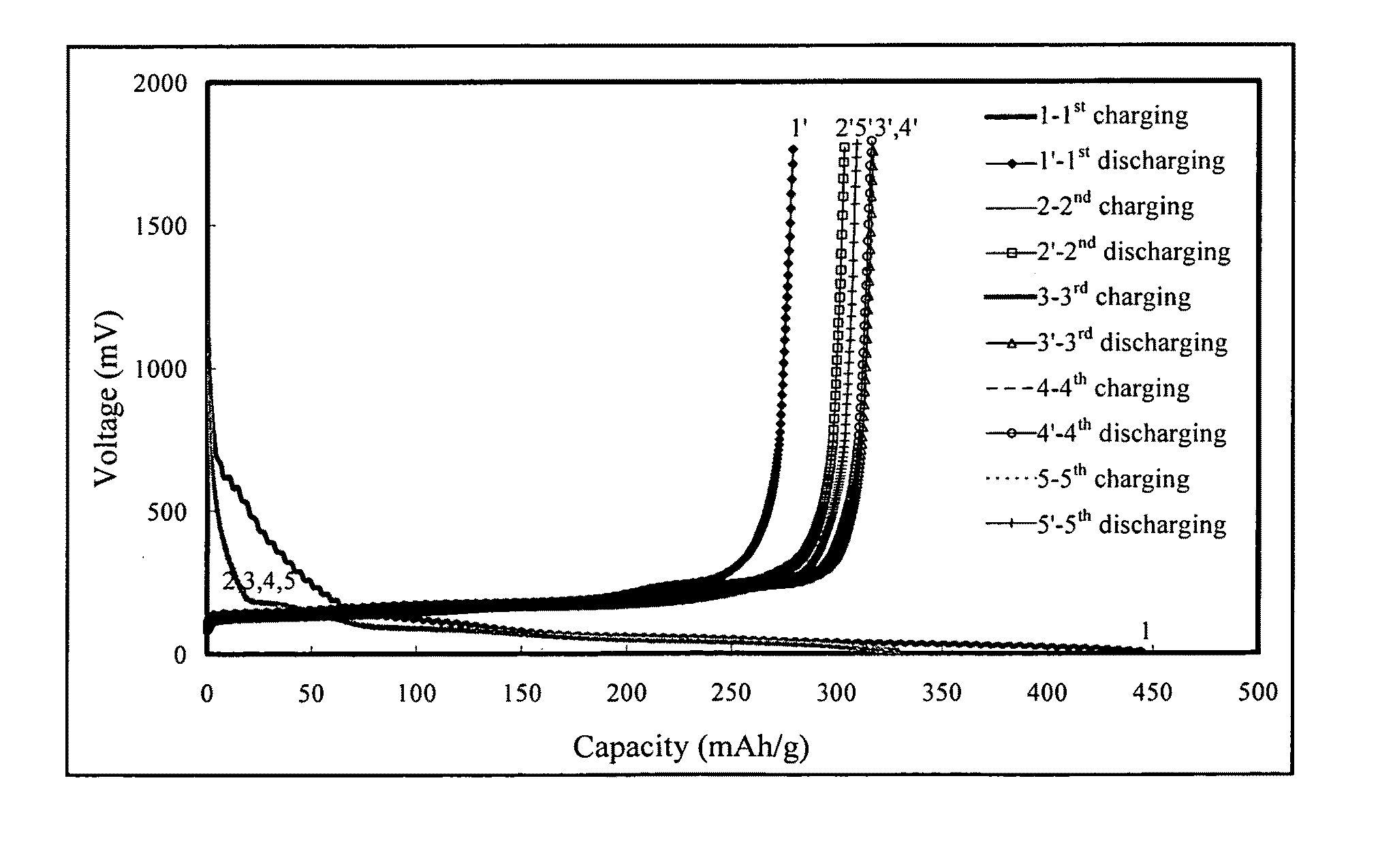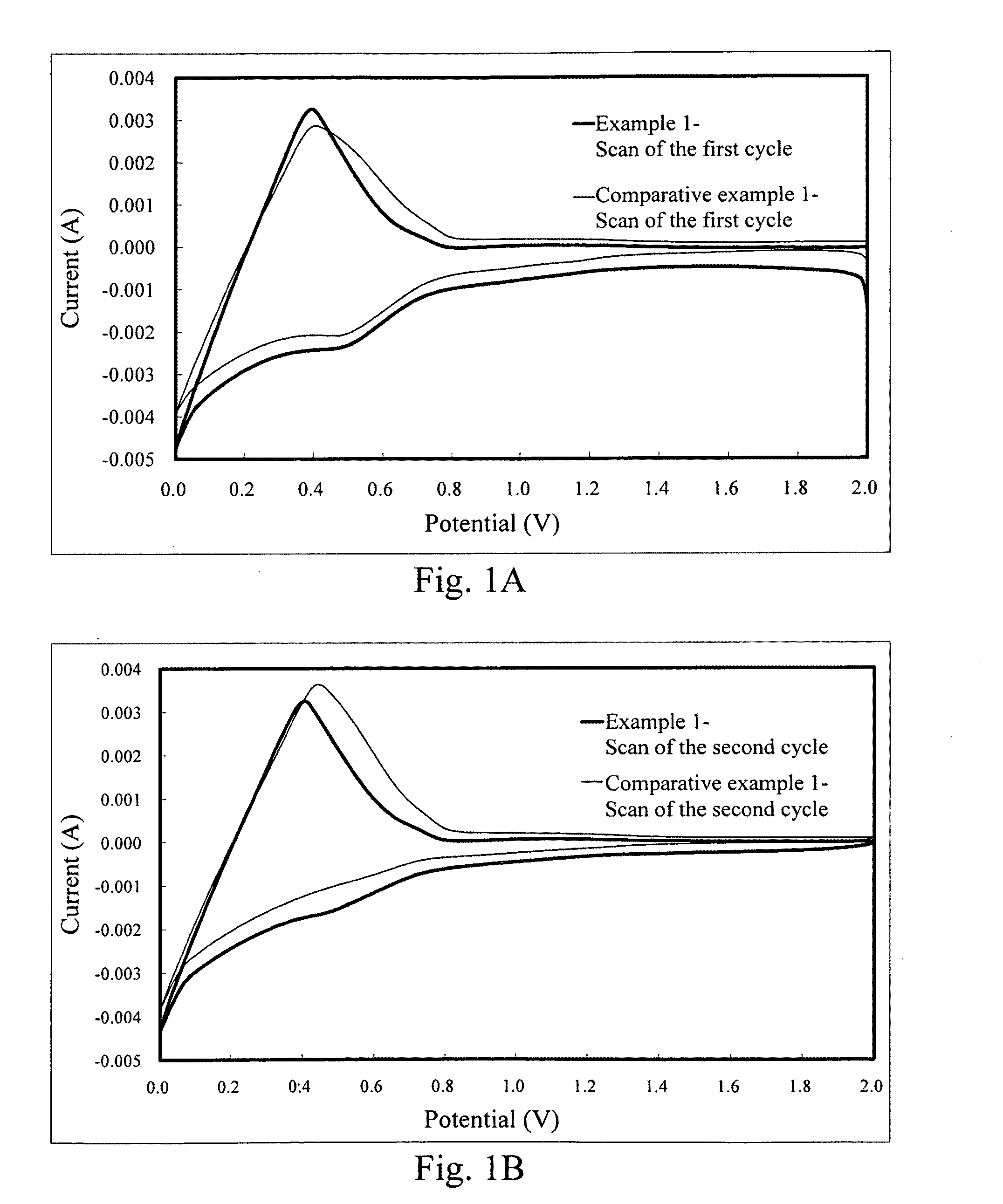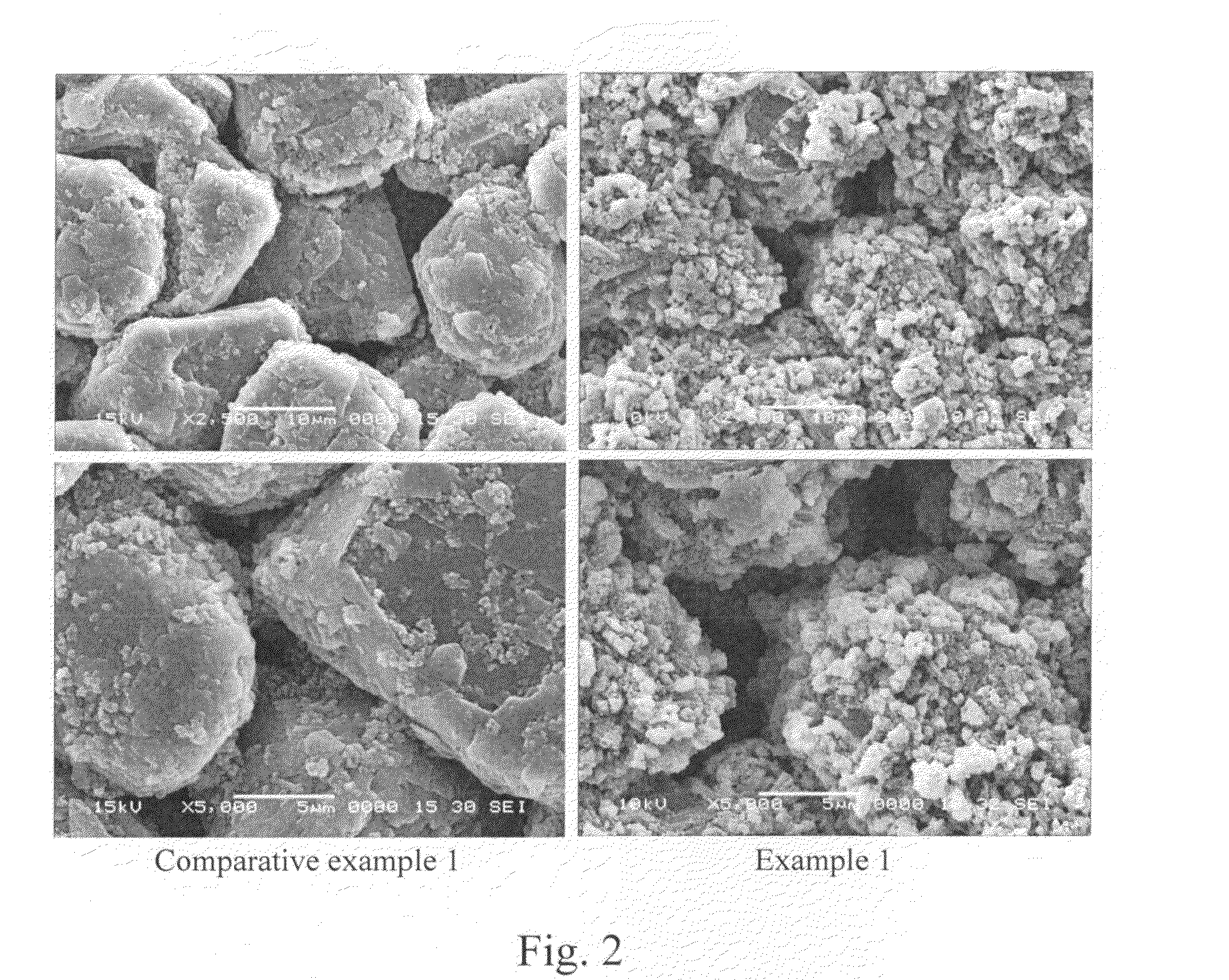Electrolyte for electrochemical device and the electrochemical device thereof
- Summary
- Abstract
- Description
- Claims
- Application Information
AI Technical Summary
Benefits of technology
Problems solved by technology
Method used
Image
Examples
example 1
Cyclic Voltammetry Test of the Lithium Ion Secondary Battery with the Additive of the Present Invention
[0038]The test according to the example 1 of the present invention was conducted in the lithium ion secondary battery. Table 1 listed the materials and components used in the lithium ion secondary batteries of the example 1. The comparative example 1 used the same materials as the example 1 except no additive. The electrode materials used in the present invention and the methods for producing the same were known in the art and the technical features of the present invention can be easily understood and performed by those skilled in the art according to the disclosure herein, so the processes were not mentioned in detail here. Besides, the concentration of the additive used in Table 1 was 1 wt %; however, the concentration of the additive can be in the range of 0.1 wt % to 10 wt %, which was easily understood by those skilled in the art. Therefore, the concentration recited in Table...
example 2
Charging-Discharging Test of the Lithium Ion Secondary Battery with the Additive of the Present Invention
[0042]The test according to the example 2 of the present invention was conducted in the lithium ion secondary battery. Table 2 listed the materials and components used in the lithium ion secondary batteries of the example 2. The comparative example 2 used the same materials as the example 2 except for no additive, the comparative example 3 used the same materials as the example 2 except for use of 1.0 wt % PS as an additive, and the comparative example 4 used the same materials as the example 2 except for use of 1.0 wt % VC as an additive.
TABLE 2the materials and components used in the lithium ion secondary batteries ofthe example 2Anode sheetNG / conductive carbon black / PVdF = 90 / 3 / 7 (wt %)Electrolyte 2OrganicPC:DEC = l:2 (by weight)solventSalt1M LiPF6Additive
Charging-Discharging Test
[0043]In order to test charging-discharging performance of batteries, the batteries of the example...
example 3
Cycle Life Test of the Lithium Ion Secondary Battery with the Additive of the Present Invention
[0045]The test according to the example 3 of the present invention was conducted in the lithium ion secondary battery. Table 3 listed the materials and components used in the lithium ion secondary batteries of the example 3. The comparative example 5 used the same materials as the example 3 except no additive.
TABLE 3the materials and components used in the batteries of the example 3Anode sheetNG-Sn / conductive carbon black / PVdF = 90 / 3 / 7 (wt %)Electrolyte 3OrganicPC:EC:DEC = 8:22:70 (wt %)solventSalt1M LiPF6Additive*NG-Sn referred to natural crystalline flake graphite modified by tin without electroplating
Cycle Life Test
[0046]In order to test cycle life of the batteries, the batteries of the example 3 and the comparative example 5 were fabricated into coin half-cells, and then connected with a charging-discharging tester (8 channels). During the charging-discharging test, the batteries were ...
PUM
 Login to View More
Login to View More Abstract
Description
Claims
Application Information
 Login to View More
Login to View More - R&D
- Intellectual Property
- Life Sciences
- Materials
- Tech Scout
- Unparalleled Data Quality
- Higher Quality Content
- 60% Fewer Hallucinations
Browse by: Latest US Patents, China's latest patents, Technical Efficacy Thesaurus, Application Domain, Technology Topic, Popular Technical Reports.
© 2025 PatSnap. All rights reserved.Legal|Privacy policy|Modern Slavery Act Transparency Statement|Sitemap|About US| Contact US: help@patsnap.com



